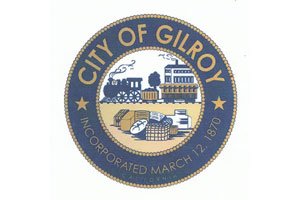A split city council, outspoken neighbors and a group of
developers have resolved their differences
– and confusions – over a small industrial park in northeast
Gilroy that has served as a microcosm for the larger issues of
traffic planning and neighborhood neglect.
A split city council, outspoken neighbors and a group of developers have resolved their differences – and confusions – over a small industrial park in northeast Gilroy that served as a microcosm for the larger issues of traffic planning and neighborhood neglect.
Since the beginning of the year Desmond Melia has been working with the city and residents along Murray Avenue to build a “Mom and Pop” industrial subdivision with 14 parcels on 7.3 acres of industrial land. With Councilman Dion Bracco absent Monday night and Mayor Al Pinheiro and Councilman Peter Arellano voting no, the council approved the project 4-2 and assured a couple of concerned residents that a traffic study will occur in the future – just not at the expense of the current applicants.
Debate concentrated on a street bifurcating the industrial park and connecting Forest Street and Murray Avenue, but residents on Murray Avenue complained (from experience) that trucks would have yet another excuse to drive by their homes dating back to the 1960s and ’70s.
So how about a cul-de-sac?
This is what Melia initially designed. He had the stubby road entering from Forest Street on the west to serve the individual businesses; the current HOPE Rehabilitation Services center on the corner of the rectangular lot already has a Murray Avenue driveway. But then the fire department expressed concerns about the proposed dead-end road, and the Planning Commission approved the department’s recommendation to build a through street Feb. 7 with a 4-2-1 vote.
Melia and his colleagues complied with the city’s evolving opinion, but when the fire department changed its mind – and told the council as much March 3 – the planning commission and council had a subsequent joint meeting to consider the larger issue of industrial development along Murray Avenue.
During all the meetings, Melia and his co-developers addressed the council along with Thomas Muniz of the North Murray Community Neighborhood Association, which represents more than 120 families. But at the last public meeting on Melia’s project April 7, nobody showed up – just the applicants, with their re-designed plans depicting the nearly original cul-de-sac after months of red tape and project tweaks.
“We have gone above and beyond, abided by neighborhood conditions – your conditions. We’re below the traffic quotas … How are these properties going to be developed (at this pace)? This really puzzles me,” Sulic said before catching his breath. “In the beginning there were was no problem, but now there are problems.”
Sulic spoke about a traffic study, which Councilmembers Bob Dillon, Perry Woodward and Craig Gartman voted against, especially, they said, if the applicants had to help subsidize it after exhibiting such acquiescence. Mayor Al Pinheiro and Councilmembers Cat Tucker, Peter Arellano and Dion Bracco voted to conduct a traffic study in the future, but Tucker joined Gartman, Dillon and Woodward in the separate vote April 7 to approve the project without the condition that the applicant pay for the traffic study. They were two related debates about the need to plan carefully.
“We need to do a traffic study out there sooner or later before it’s too late,” Bracco said the day after the April 7 council meeting. Bracco warned of a “major problem” if the council keeps taking a “piecemeal” approach with development throughout the area. While the project conforms with the city’s long-term General Plan and Bracco said he liked the project and the location, the councilman said he also preferred to save taxpayers money by recouping some of the study costs from the traffic-inducing developer.
But the majority nixed the idea.
“What is the need of a traffic study?” Gartman asked Transportation Engineer Don Dey, who appeared nervous at times justifying the need of a full-blown study to other skeptical council members. At one point Woodward’s countenance conveyed disbelief as he chuckled while massaging his temples with both hands.
Such reluctance toward a traffic study comes from the estimation that each day about 1,000 cars drive along Forest Street, which can handle about 8,000 to 10,000 vehicles a day. Each day between 3,000 to 4,000 autos cruise down Murray Avenue, which has a daily limit of 15,000 to 16,000, according to Dey. By the applicant’s calculations, a cul-de-sac will result in 234 more average daily trips on Forest Street, which is “no where near capacity,” wrote Lee Weider, who works with Melia.
Gartman agreed and said, “There always seems to be a new requirement at the last minute.” Plus, he added, the council has adequately listened to the neighborhood association. Another example was last year when the council also vetoed a controversial truck parking lot near the Murray Avenue neighborhood.
In an e-mail Muniz said residents were happy with the cul-de-sac outcome that will bring business to the area.
“The planned, adjacent industrial park and commercial businesses will integrate with the neighborhood and not adversely affect the neighborhood,” Muniz wrote before thanking the city council and the applicants (among many other city departments and commissions) for “actively listening and acting on the concerns and interests of the community.”














